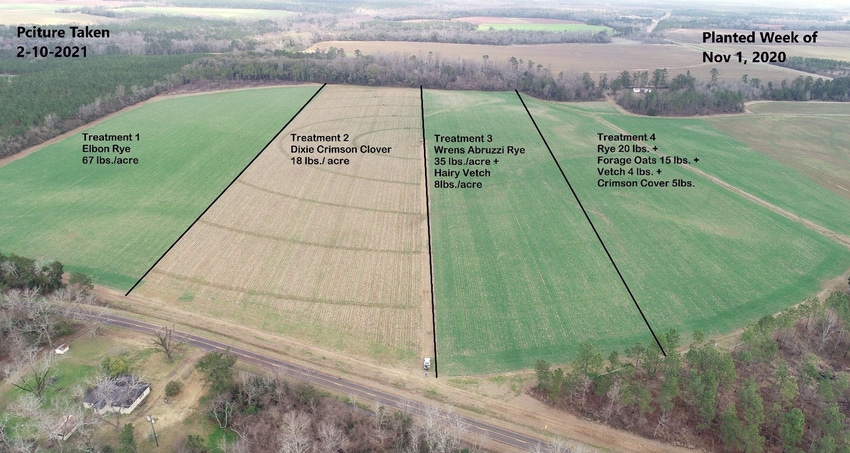
The rain settled in. It did a lot this year. At the field's edge, the spray rig sat ready with defoliant as soon as conditions allowed. Robbie Faust was particularly curious about the yield data from this 70-acre pivot. It was the first week of October.
Seth Mcallister was there, too. As University of Georgia Extension agent in Terrell County, he had spearheaded this large research study on Faust's southwest Georgia farm. The yield data would complete the first leg of the two-year study to measure the biomass of four cover crop mixes planted in early November and, based on sampled dry material produced from the cover, the nitrogen available to the following crop, which in this case was cotton.
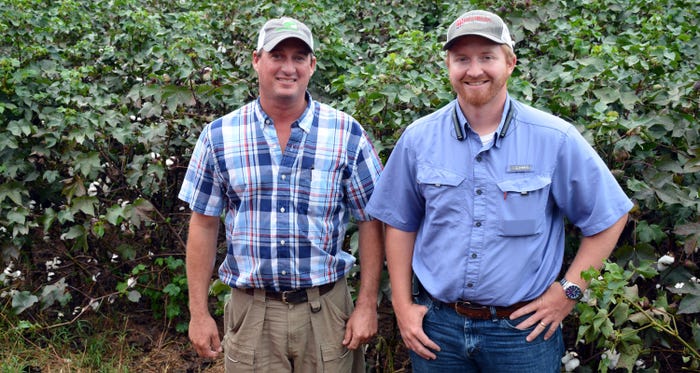
Robbie Faust, left, and Seth Mcallister, UGA Extension agent in Terrell County, Ga., in early October on Faust's southwest Georgia farm, where they are working on a two-year cover crop study. Credit: Brad Haire.
"We took the 70-acre pivot and broke it into 17-acre strips to plant multiple cover crop varieties and blends. As part, we want to show growers the potential biomass that can be generated from a cover crop if it is planted by early November, in this case Nov. 1, as opposed to the December-January plantings that often occurs in our area," Mcallister said.
For the study, they looked at four cover mixes:
Wrens Abruzzi Rye;
Dixie Crimson Clover;
Rye+vetch.;
And a four-way mix of the rye, clover, vetch and forage oats.
The field, Faust said, has the potential to be erodible and hadn't been tilled in more than two decades. The soil type varies slightly across the field, but mostly it's a 'stiffer' deep-red clay, the kind some country music stars write about.
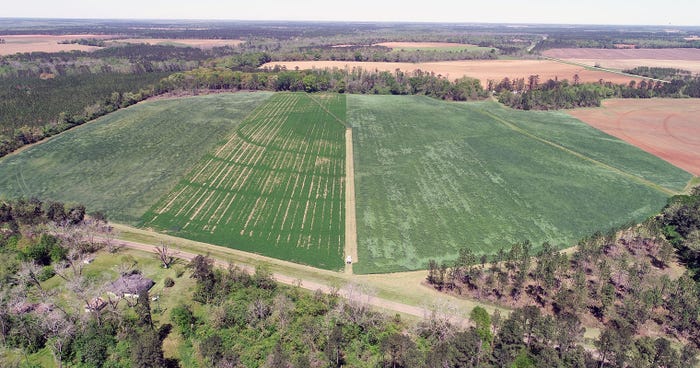
This 70-acre pivot was divided into 17-acre strips to plant multiple cover crop varieties and blends to test. This is what it looked like on April 1. Credit: Seth Mcallister.
For the study, the cover crop mixes were planted behind corn, which provided some residual fertility boost.
The seeding rate for the:
Wrens Abruzzi Rye was 67 pounds per acre and cost $25.46 per acre.
Dixie Crimson Clover was 18 pounds per acre and cost $18 per acre.
Rye+vetch was 35 pounds of rye and 8 pounds of Auburn Merit Vetch per acre and cost $28.50 per acre.
Four-way mix was Wrens Abruzzi Rye at 20 pounds, the clover at 5 pounds, rye+vetch at 4 pounds and forage oats at 15 pounds per acre and cost $28.75 per acre.
Before rolling the plots down, Mcallister took samples from each plot and sent them to a UGA lab in Athens to measure the per-acre dry bulk of each. Here are the results:
They rye alone produced 3,925 pounds per acre and gave 10 pounds of N per acre;
The Crimson Clover alone produced 2,824 pounds per acre and gave 59 pounds of N per acre;
The rye plus vetch produced 5,308 pounds per acre and gave 75 pounds of N per acre;
The rye-clover-vetch-oats produced 6,173 pounds per acre and gave 66 pounds of N per acre.
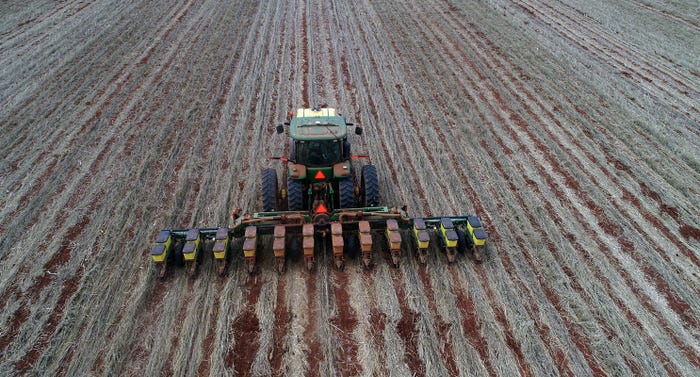
May 12 at planting, the research field looked like this after being stripped the first week of May. Credit: Seth Mcallister.
For the cotton fertility treatment, they cut N fertilizer over half in each plot by the amount listed above and will track yields compared to the farmer “standard” fertilizer rate in each treatment.
The cover was rolled down the first week of April with a cultipacker. The cover was then terminated the second week in April. They gave the cover a couple of weeks to settle down. Faust ran a stripper through it all the first week of May and planted behind the stripper a Deltapine variety. Cutting through the covers' biomass took some effort in some spots of the denser plots, Faust said, but not enough to cause too much of a problem.
"I know growers can be hesitant with the cost and benefit of a cover and that much organic matter can be intimidating when its head high or higher in the field, when the beginning of the planting season is at hand and getting a good stand is everything. But what I hope this study can show or help lead us on is what might work for the growers in our area," Mcallister said.
"I've used some cover before, and I think it helps. But being able to test like this on a farm, especially our farm, I see as a good opportunity to see what can work at a scalable level," Faust said.
After seeing this first-year's results on the cover crop plots, Faust said he might plant more acres of the Rye+vetch mix on his farm outside of the research trial. The field and much of the region received well above average rainfall, especially from May to harvest. Drone-view shots of the field throughout the season showed the research field had little to no erosion issues all year.
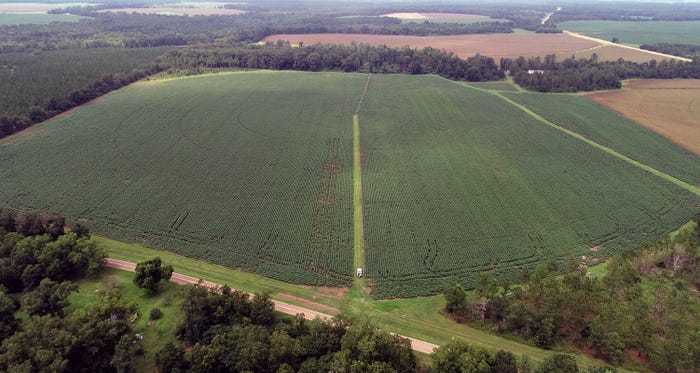
Aerial view of the cotton Aug. 4. Credit: Seth Mcallister.
The study is in partnership with Faust, UGA Extension, the Golden Triangle RC&D, the Jimmy Carter Plant Material Center, the Georgia Soil and Water Conservation Commission, and the Georgia Association of Conservation Districts.
Southeast Farm Press will circle back with Mcallister and Faust later this year to check on the cotton yield data, discuss the growing season for the cotton side of the research trial, and the planting of the next cover crop behind cotton.
Read more about:
ExtensionAbout the Author(s)
You May Also Like






